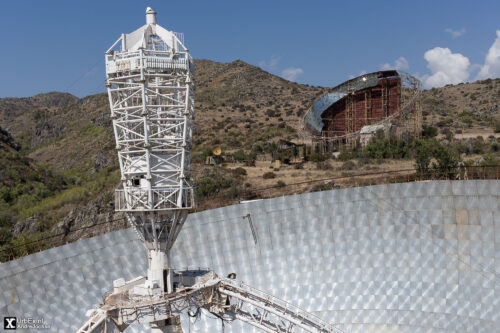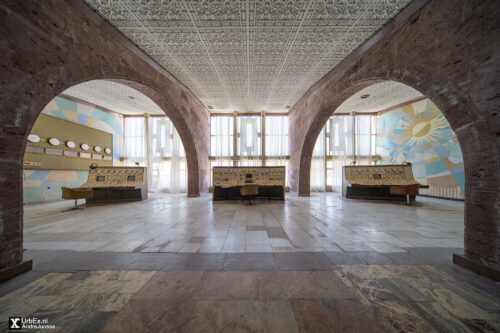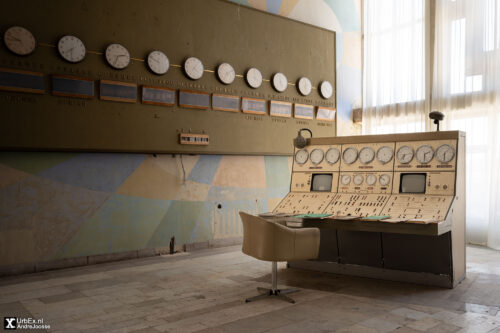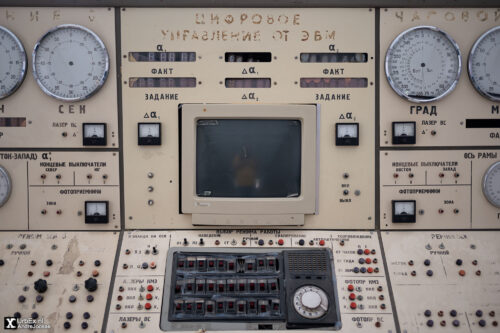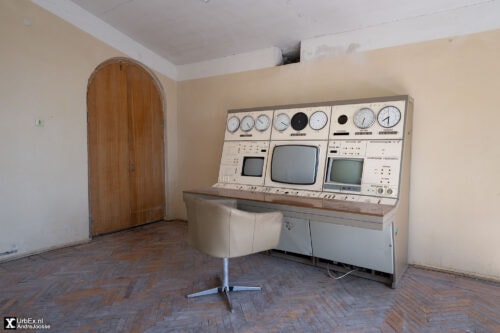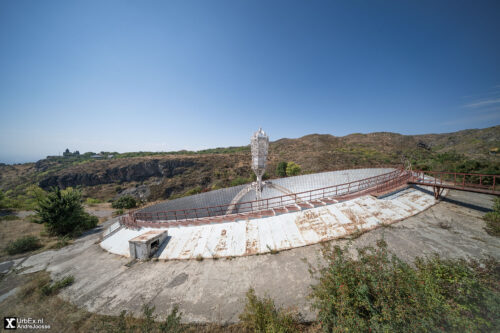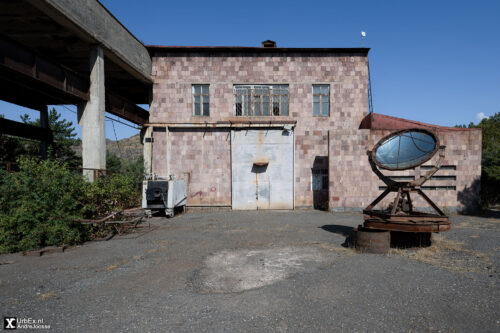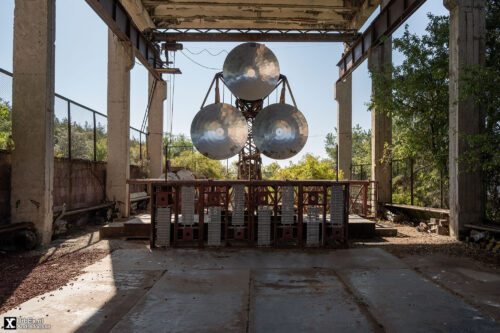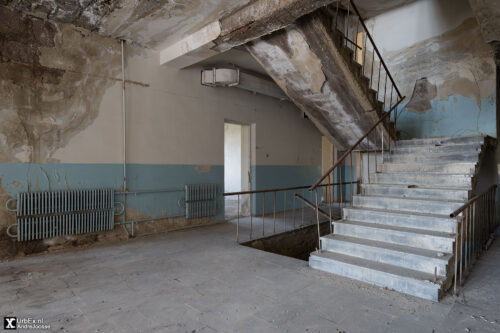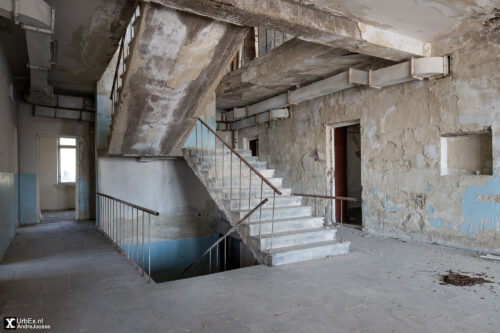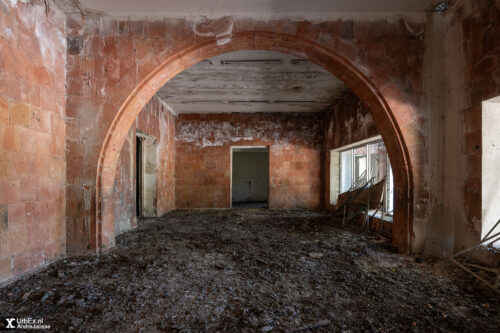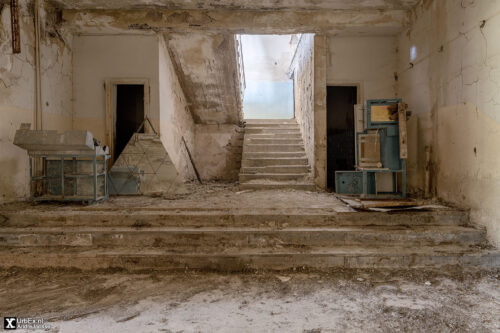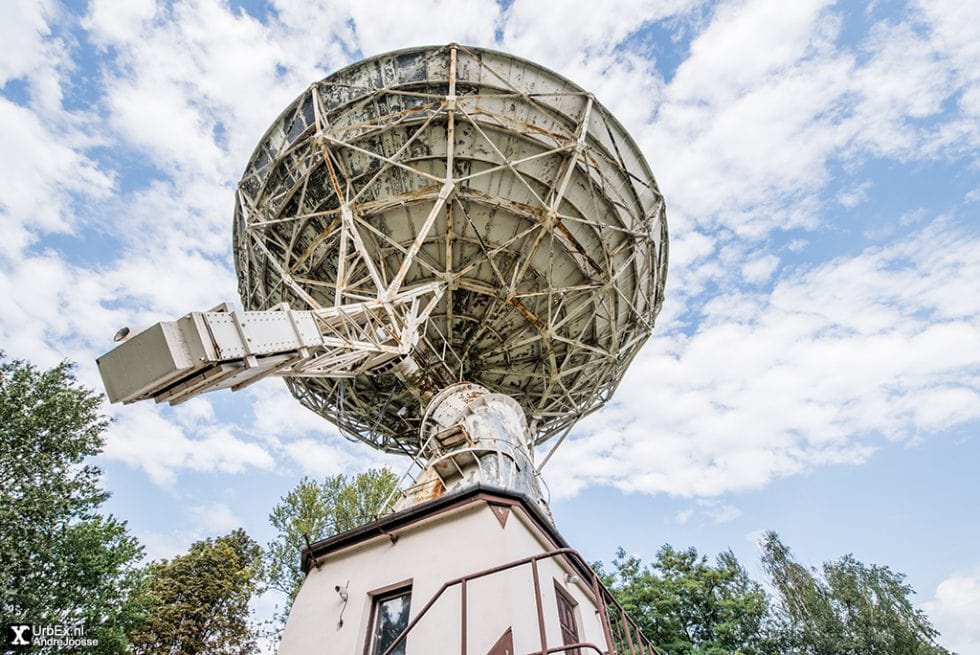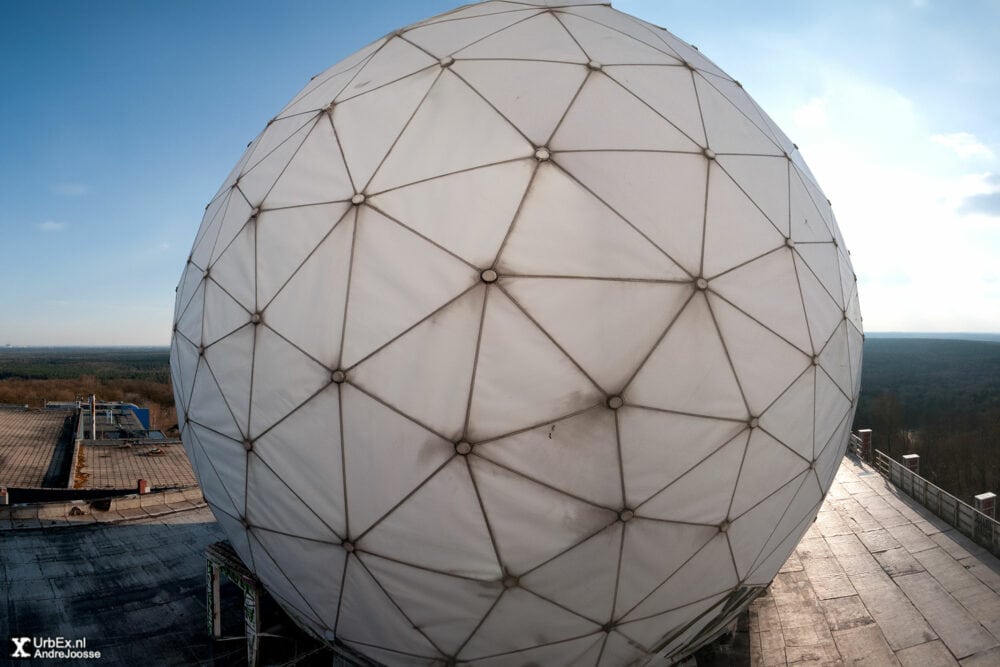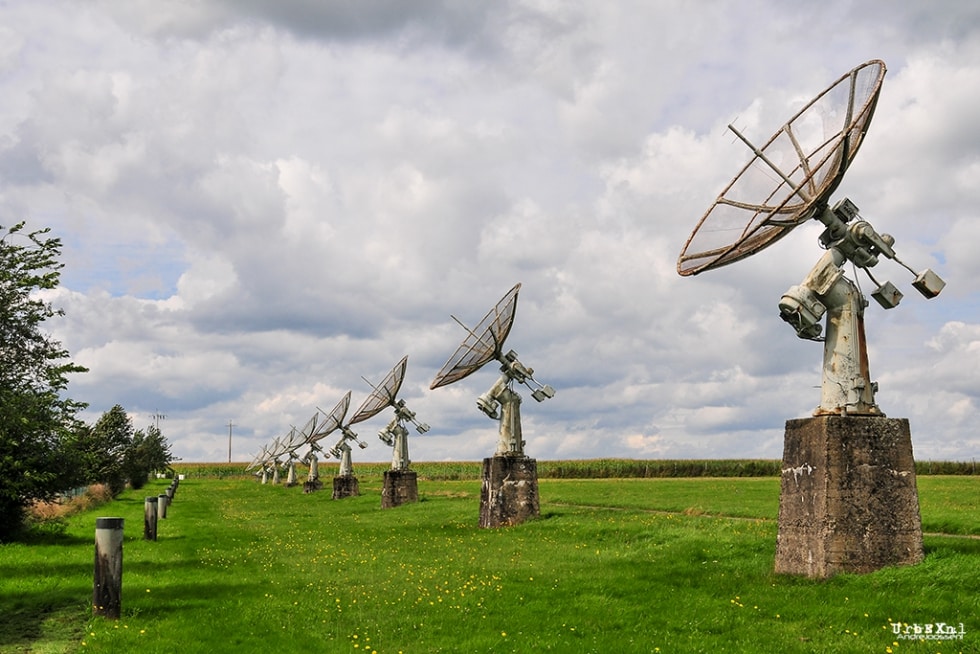Orgov Radio-Optical Telescope
The Orgov Radio-Optical Telescope, also known as ROT54 or the Herouni Mirror Radio Telescope, is a radio telescope in Orgov, Armenia. It was built between 1975 and 1985 and was active between 1986 and 1990.

The telescope is located at a mountain at the RRI Aragats Scientific Centre in Orgov, Armenia. Construction of the site took place between 1981 and 1985, but the original plans were already made in 1964 by Paris Herouni. The telescope became operational in 1986. An explosion of the red giant (the twin star of the constellation Gemini) was recorded here, also numerous articles were published in scientific journals of the USSR and abroad.
Telescopes
The giant Spherical Antenna is a unique instrument with a diameter of 54 meter. It is hemispherical, and fixed to the ground, with a movable secondary mirror with a diameter of 5 meter. The optical telescope has a 2.6 meter mirror, with a 10-meter focal length.
The telescope dish is one of the most sensitive of its kind in the world. Radio telescopes are used to study deep space by picking up faint radio waves given off by distant stars and galaxies that can be visualized into an image.
Restoration attempts
Telescope operations ceased around 1990. In the mid-1990s, restoration of the telescope was proposed. Between 1995 and 2010, the telescope underwent modernization with new control computers and updated feeds, leading to the resumption of observations. This collaborative effort involved the Astronomical Society of Russia and the National Technical University of Athens.
However, in 2012, operations came to a halt once again due to a control arm failure that immobilized the secondary mirror. Unfortunately, the Armenian state could not afford the repair costs, resulting in the eventual mothballing of the research complex. As a consequence, over half of the buildings at the site were left vacant.
Despite these challenges, numerous attempts have been made to restore and restart the ROT54. Recognizing its historical and cultural significance, it was officially registered as an Armenian monument in 2002. I personally visited the site in 2023.

